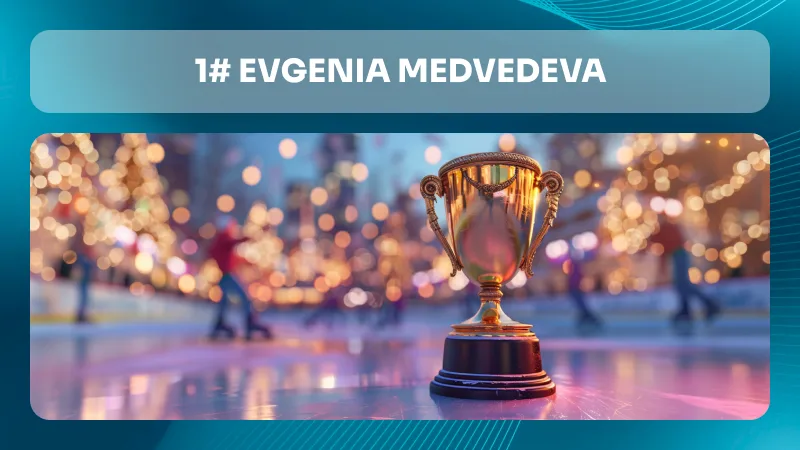
Despite the criticisms of professionals and parents alike, a large number of children participate in youth sports these days. Youth sports mostly concentrate on sports like basketball, soccer, and American football, but other sports, like figure skating, are also very well-liked in some communities. On the other hand, there is a viewpoint that claims youth sports are actually more harmful than beneficial and that young athletes are often in grave danger. Today, we recommend learning about the highs and lows of figure skating in kids and talking about whether it is worthwhile to take up this sport at such a young age.
What Are Youth Sports?

Youth sports are, to put it simply, sports that kids play professionally. However, since this sport encompasses a vast world with a wide variety of communities and groups, the definition of its sector goes beyond that in general. These are, in essence, adult and sports industry professionals’ kid- and youth-focused sports initiatives. Kids who take part in these programs get to practice the sport of their choice under the guidance of designated coaches, play organized games, and gain experience from regular practices and competitions to advance as professionals in the sports industry. Many schools offer youth sports programs because it is thought that these activities improve children’s mental and physical health. In addition, since they help kids develop their careers, these programs are frequently linked to education. The principal objective of these programs and practices is to generate elite athletes who will subsequently pursue professional sports careers upon entering the industry. Children can also obtain a professional sports contract and a full college scholarship in collaboration with their coaches if they possess particular talent and aspire to play for a top team.
If you enjoy professional sports such as figure skating feel free to check the following link https://1xbet-uganda.ug/bonus/.
These sports programs and camps, however, are highly controversial because it is well known that they are extremely harsh and have a significant impact on children’s physical and emotional well-being. The strain placed on these kids increases their risk of developing depression and anxiety. They also run the risk of developing the “win at all costs” mentality, which is a problem for many professional athletes these days. One of the biggest issues is that kids are essentially having their childhoods stolen because of all the extracurricular activities, school, homework, and sports practices they have to juggle. Furthermore, it is undeniably true that the sports industry is not the most conducive to success, particularly for those starting out so young.
Figure Skating
A popular sport that draws thousands of spectators annually is figure skating. It is majestic and lovely, and it takes a lot of talent and work to be good at it. The activity involves performing on ice with figure skates, either alone, in pairs, or in groups. When it was played at the London Olympics in 1908, it became the first winter sport to be featured in the Olympic Games.
As previously mentioned, skating is a skill that takes a lot of talent and professionalism. In addition to being risky and requiring good balance, skating requires practice from a very young age in order to be successful. Three to five years old is the ideal age range to start a figure skating career, as many professionals say.
The Controversy
The controversy surrounding youth sports is sparked by the amount of pressure placed on children who practice figure skating. Many parents, particularly those who are female, use sports like gymnastics and figure skating to fulfill their unfulfilled goals and aspirations. As a result, they place extreme pressure on their children from almost the moment of birth. Many of the children who play these sports suffer greatly from conditions like joint problems and other health problems that cause more problems down the road. Overuse injuries are more common in kids who train year-round in a single sport and specialize in it.
According to detailed reports on the different types of injuries, lower back pain, enthesitis, fractures, and ligament injuries were the most common.
The mental health issues these girls face are also a major source of controversy. Figure skaters often compete alone, without the support of teams, and must navigate the demands of their career and the competitive nature of the sport alone, with the exception of their parents, who frequently push their kids to do things they do not even understand. This makes the sport more harsh than football, for example. There is a very high chance of burning out too soon, wanting to give up, and developing anxiety or depression.
There was a huge surge in the number of young people competing in figure skating championships and tournaments at the time. Russian children in particular were renowned for being the most skilled in the world and for their outstanding performances at international events. But as more and more people come to realize that their children should not be treated the way they were, should not be traumatized, and should not have their childhood stolen by the desire to be the best at a sport, there appears to be less participation these days.
World Stories of Ups and Downs
Figure skating is an amazing sport with lots of benefits and is very beautiful, despite its serious drawbacks. It teaches children how to live a magical life and escape the ordinary. But we firmly think that everything needs to have limits and be in balance. We have selected a few well-known global anecdotes from children who have personally experienced both the positive and negative aspects of figure skating. Together, let us explore the world of these children.
1# Evgenia Medvedeva

At the age of 24, Evgenia Medvedeva, a young figure skater, has already experienced the career of a fully grown adult. She is currently retired. A lengthy list of her victories and titles includes the silver medal she earned at the 2018 PyeongChang Olympics, the two world titles, the two European titles, the two Grand Prix Final titles, the silver medal she won at the 2018 European Figure Skating Championships, and many more.
Eugenia’s mother enrolled her in a figure skating program because she was a figure skater as well, but she gave up the sport when she was 14 years old. However, the main motivation for Eugenia’s parents to enroll her was for her to get in better shape and health.
She started her career at the age of three, which is relatively young for this field. She received instruction from Lubov Yakovleva, Elena Proskurina, and Elena Selivanova, three coaches who gave her the best skills and knowledge a professional figure skater could have. At the Olympic Reserve Sports School No. 37, she resumed her training at the age of seven. At the 2012 Russian Championships, Medvedeva made her senior national team debut by placing eighth. She subsequently placed sixth in the junior division. Later, she made her international debut in 2013–2014, marking the beginning of her ice hockey career that would eventually become fully professional.
This brings us to the negative aspect of her career: as we have mentioned before, a lot of professional ice skaters and athletes have multiple injuries and chronic pains, especially when they are young. A persistent back injury forced Medveda to retire. Many of her fans were upset and disappointed when she revealed this information in 2022, but she made the decision to prioritize her health.
2# Alina Zagitova

Just 21-year-old Alina Zagitova is another highly skilled ice skater. She is among the Russian professional athletes who, over the past ten years, have astonished the world and captured the attention of spectators. Despite having a long list of victories, her most well-known achievement is being the 2018 Olympic champion in the women’s figure skating competition. Many experts and fans of this sport were surprised to learn that she was only 15 years old at the time. In addition, she won the Russian national championship in 2018 and the Grand Prix Final in 2017–2018. Her father was a hockey coach for the Neftyanik club in Almetyevsk, Tatarstan, and she started figure skating at the age of four under the tutelage of Damira Pichugina. She eventually relocated to Moscow, where she carried on with her increasingly professional practices.
She is still working on her career, unlike Medvedeva. However, because of her extremely demanding practices and career, Alina faces a variety of challenges, including issues with motivation and mild mental health issues. After the Grand Prix Final, she declared she was done competing and suspended her season. 2019–2020, roughly, was a major turning point in her life because she had to confront a lot of mental challenges pertaining to her career. She did not compete for the 2020 European Championship because she withdrew from the Russian Championships in 2020, and then she decided to postpone her competitive figure skating career until at least 2021. However, Zagitova resumes her ice skating practice as planned after this break.
3# Tara Lipinski

Tara Lipinski is the American representative, in contrast to the two girls mentioned earlier. Being the youngest figure skater to win an Olympic gold medal, she is one of the most well-known young Winter Olympians. She will always be remembered as the late 1990s figure skating world’s idol. Even though her career was short, she won every competition she entered during that brief period of time. She made the decision to retire following her Olympic victory.
Tara started roller skating when she was three years old, and at nine years old, she won a national championship in her division. This is quite interesting because Tara did not start out as a figure skater. However, she started playing this sport that same year and eventually stopped playing other sports and focused only on this one at the University of Delaware in Newark, Delaware.
Like most cases, her retirement was brought on by injuries and high levels of stress. In 2000, she underwent surgery for a stress fracture in her foot in addition to surgery on her ankle. Tara found it challenging to train and compete at the highest level due to these problems as well as a few minor mental health issues. She had to deal with the younger skaters’ growing competition, which was too stressful for her to handle.
Conclusion

In summary, this article shows that while figure skating is a very beautiful and majestic sport, it does require a lot of skills that not everyone possesses. For instance, girls who want to pursue this activity professionally need to be very intense by nature and possess stress resistance skills in addition to being highly skilled skaters who exhibit professionalism and technique.
Youth sports are unquestionably beneficial to health, but only to a certain extent. If pressure is applied beyond what is healthy, children may experience a variety of psychological and physical issues. If they have played sports professionally since they were young, most of them quit their careers early because the pressure was too great for them. In this field, injuries and mental health concerns are prevalent, particularly among younger individuals.
